

CarExpert.com.au
The CarExpert team's favourite cars of 2025
2 Days Ago
I can tell you, categorically, the new 911 GT3 is the most complete naturally-aspirated Porsche GT road car I’ve ever driven.
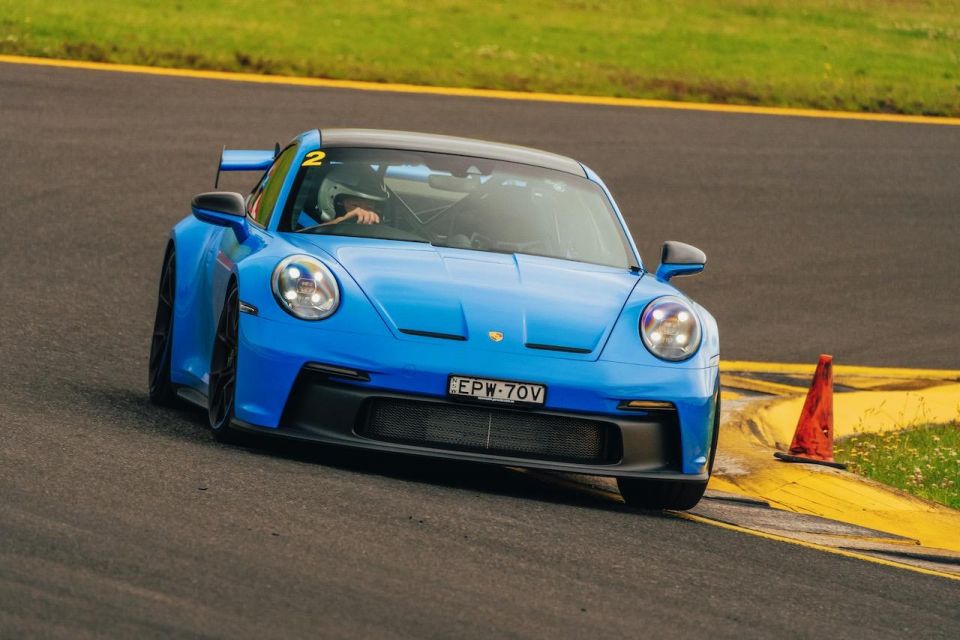
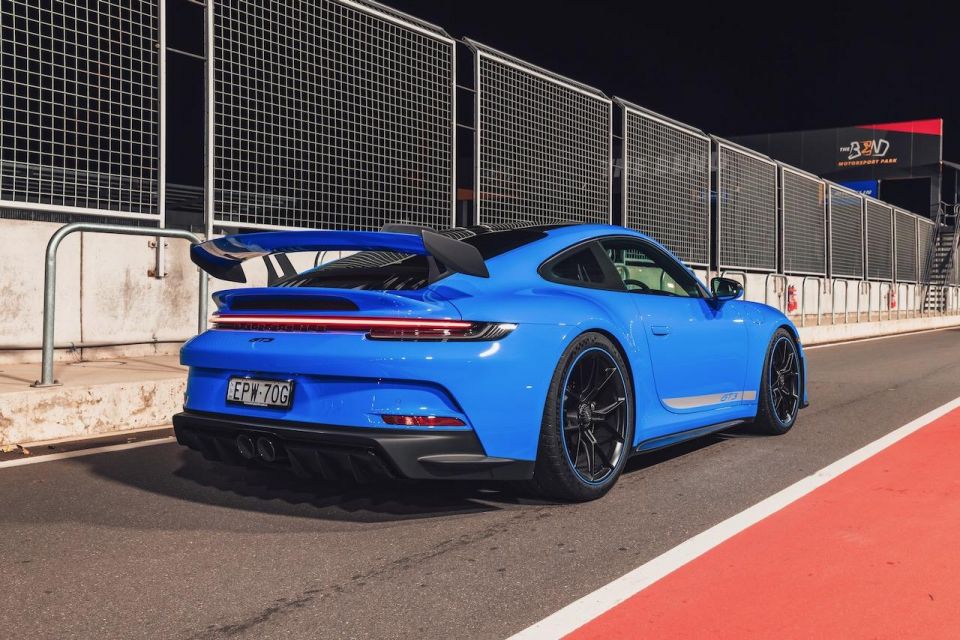

Senior Road Tester
New from
$274,600
excl. on-roads

Senior Road Tester
New from
$274,600
excl. on-roads


Senior Road Tester
New from
$274,600
excl. on-roads

Senior Road Tester
New from
$274,600
excl. on-roads
Quickly see how this car stacks up against its competition. Select any benchmark to see more details.
Where expert car reviews meet expert car buying – CarExpert gives you trusted advice, personalised service and real savings on your next new car.
When the new 992-generation Porsche 911 GT3 images first hit the web, I was of the view the so-far-perfect evolution of the 911 had finally gone a step too far, but when I pulled up to pit lane at Sydney Motorsport Park to a row of three GT3s in the beguiling Shark Blue, everything changed.
Suddenly, its 991 predecessors looked generations older. That conspicuously high-profile rear wing, which to me was so beautifully integrated into the rear bodywork of the 991 version, now looked decidedly old-hat. Yet, this was a car I lusted over far too many times to recount.
Less than five years ago I recall hurtling around Queensland Raceway at full tilt in a handful of spanking-new 911 GT3s, and thinking there’s no other production-series sports car on the planet that can take this kind of non-stop track abuse for hours on end by wannabe race drivers (motoring journalists) and then be driven home without a single mechanical or tech issue throughout the entire day. That’s what a GT3 can do straight out of the box.
The term ‘race car for the road’ was surely coined by the earliest Porsche 911 owners who did just that, raced at club meets on weekends before hopping back in overalls and driving home Sunday night in what likely doubled as the daily driver for some.
I’m thinking of cars like the 1973 Carrera RS with its trademark burzel, or ducktail spoiler, a car that more or less formed the basis of Porsche’s earliest motorsport program. But even the lightweight 911T (1020kg) became a favourite with club racers in Europe and the United States and would inspire models like the 911 T/R, which used parts from the 1967 911R, which was effectively developed by racers ordering parts and installing them.
More than 50 years on and Porsche is still building road-going racers in the form of its highly-prized GT models. And, just when you thought Andreas Preuninger and his team – who are responsible for creating these motorsport-derived GT cars – couldn’t possibly build something better than the current version you’re driving, along comes the 992 911 GT3 and blows that notion to smithereens.
This a 911 GT car so superbly engineered that anyone with half-decent driving skills will likely demolish any previous-best lap times, and by some margin. While it’s right to take a little credit for your improved skills behind the wheel on such occasions, trust me when I tell you it’s Preuninger and his band of engineering sorcerers you need to be thanking for the extra speed through carrying through the corners.
I haven’t had a chance to take the new 911 GT3 on a public road yet (that’s coming soon), but I’ve got more than a hunch that ride comfort will be superior to its predecessor, but again without compromising any part of the on-track experience.
As always, with any Porsche with a model description contains the acronym GT3, it’s about more power, less weight, a wider and lower body, optimised aerodynamics and the very latest technology.

And, whereas previous versions have always tended to offer a tad less comfort than regular 911 models, this one feels different, but not at the expense of its razor-sharp track focus. That’s the real magic here. There’s so much going on underneath, mechanically, technologically and aerodynamically but somehow it all comes together to create a sports car that’s so much greater than the sum of its parts.
We know it’s faster than the previous GT3 RS at the Nürburgring Nordschleife, where it managed to clock a 6:59.927-minute lap, smashing the previous 911 GT3’s performance by a staggering 17.5 seconds. We’ll see a new generation of the GT3 RS drop in the next year or so.
Porsche’s fanatical focus on weight saving and aerodynamics has never been more evident than with the latest 911 GT3. It’s not just this or that, either, everywhere you look there’s weight-saving going on in the new GT3.
Never mind its noticeably larger body, bigger wheels and brakes, as well as more technology and comfort built in than ever before – it still only weighs five kilos more than the previous generation and that’s with the PDK auto transmission (1435kg v 1430kg), which in itself, I find staggering. The no-cost six-speed manual slices a further 17kg from the GT3 for those purists not fussed with ultimate lap times and want the ultimate Porsche driving experience.
Beyond the omission of the eighth gearset that’s standard in the regular 911 Carrera models, the GT3 gets a carbon-fibre bonnet (and optional carbon roof), lightweight glass windows, optimised brake discs, forged alloy wheels and a lighter rear compartment cover – it doesn’t open, bar a single fluid reservoir pod.
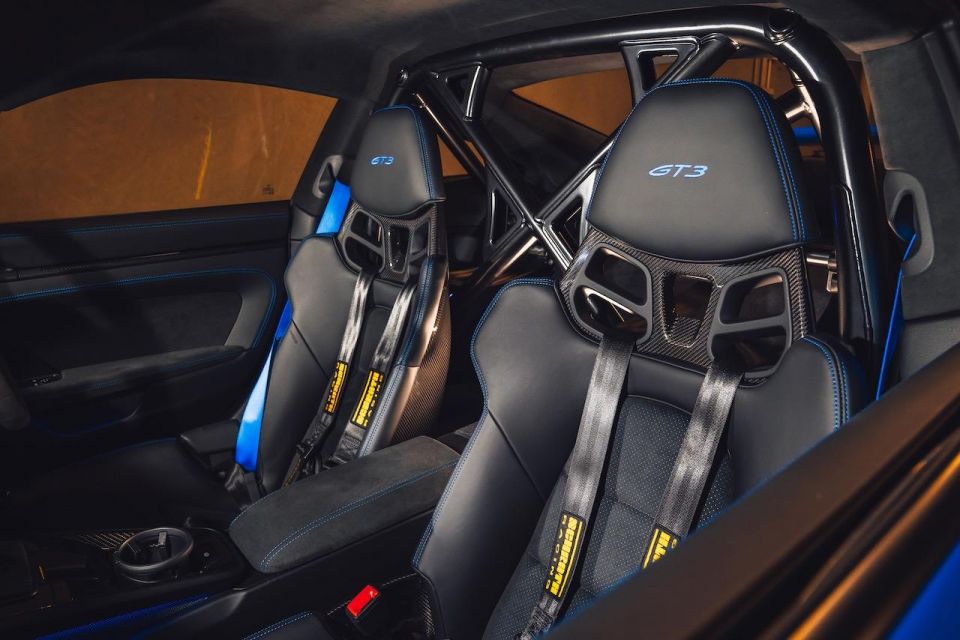
Moving underneath the car where you’ll find a stainless steel sports exhaust which saves another 10kg compared to the system used in the 991.2 GT3.
Big wings and aggressive front bumpers have always been a hallmark of the GT3, and the latest version is no different. In fact, it takes aerodynamic science to a whole new level, and not just from a visual standpoint, either.
The active rear diffuser is more pronounced than before and as such generates four times the downforce of its predecessor, thanks to the front diffusers working in concert with the extra-wide spoiler lip in the interest of a more even airflow along the fully-clad underbody.
Then there’s that big rear wing. Not a fan at first, as the pics made it look huge (GT3 RS style), but up close in the metal, it’s got a lower profile that what you might have thought. It’s aptly known as the swan-neck due to is top-mounting and overall shape, but that allows uninterrupted airflow under the top plane that produces up to 150 per cent more downforce in its most track-focussed setting than the previous GT3 could claim.
For many, though, the latest Porsche GT3 will already be the most sought-after Porsche 911 road car on the planet, not for its increased downforce, impossible weight-saving, or even its double-wishbone front suspension straight from the 911 RSR racer, but for its howling, naturally-aspirated 4.0-litre flat-six motor – practically unchanged from the 911 GT3 Cup car.
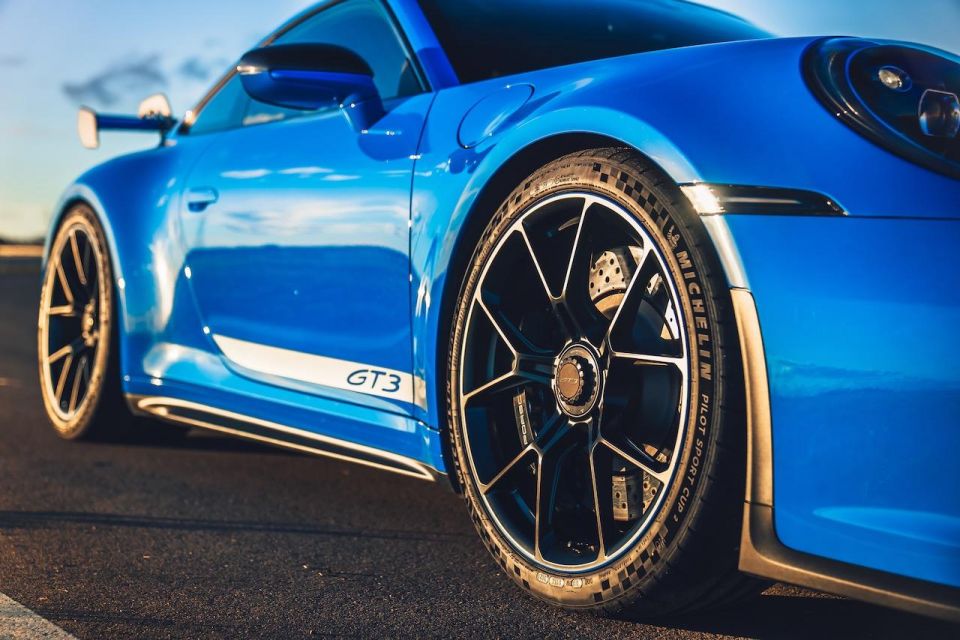
The 2022 Porsche 911 GT3 range has effectively one price for all variants; $369,600 excluding on-road costs, regardless whether you choose the seven-speed PDK or six-speed manual transmission.
If you prefer a more subtle approach to your 911 GT3 ownership, there’s the 911 GT3 with Touring Package for precisely the same outlay of $369,600 – again with either transmission.
The Touring Package dispenses with the rear wing for an automatically extending rear spoiler instead, as well as being equipped with a six-speed manual as standard, but with the seven-speed PDK available as a no-cost option.

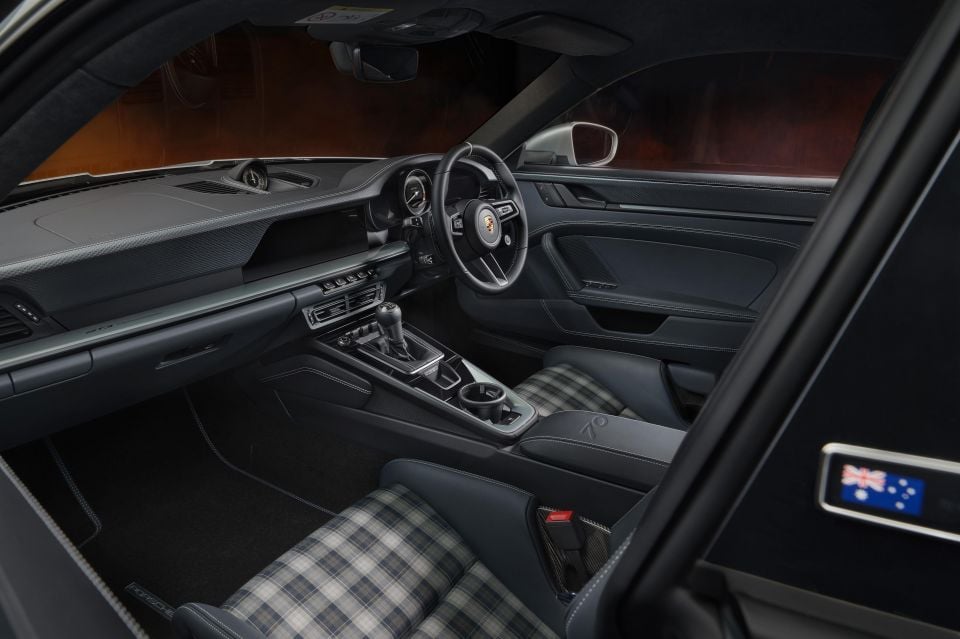

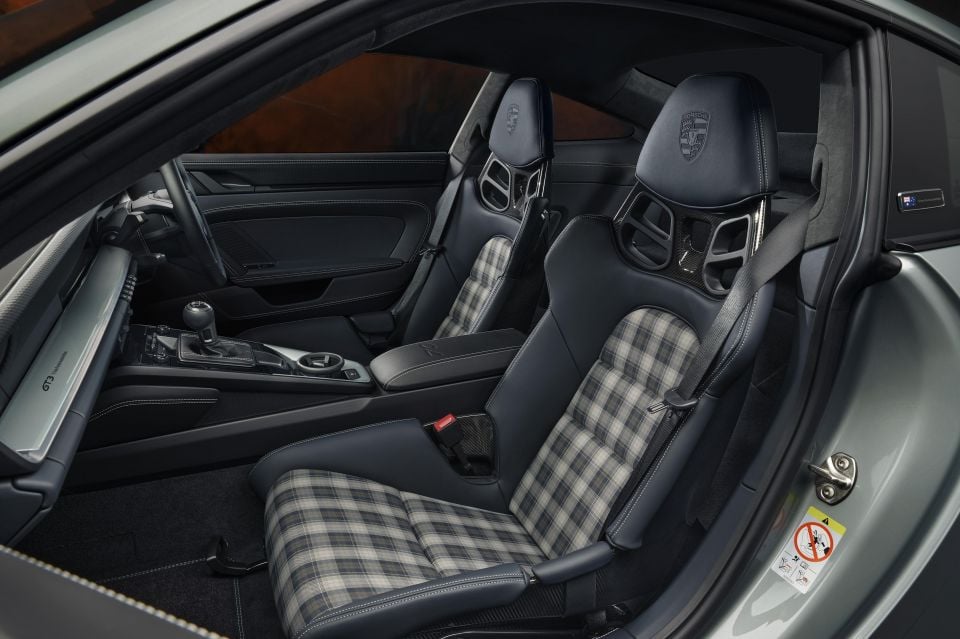
For those buyers keen for something properly exclusive in the GT3 range, there’s also the ‘911 GT3 70 Years Porsche Australia Edition’, based on the GT3 with Touring Package, but with a comprehensive list of additional and unique features.
It’s a specific market-specific edition designed in collaboration with the Style Porsche design team, the Porsche Exclusive Manufaktur customisation department and Porsche Cars Australia to celebrate the first two Porsches imported in Australia by Norman Hamilton 70 years ago.
Priced from $494,300 plus on-roads, all Editions have already been allocated to customers, which is hardly surprising given the current worldwide thirst for any limited-edition 911, regardless of the price tag.
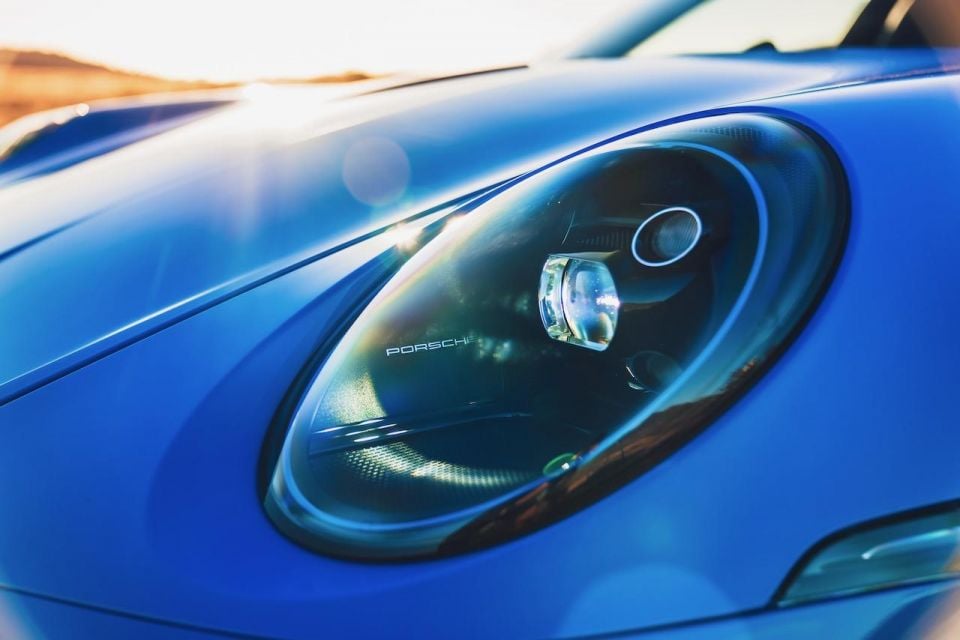
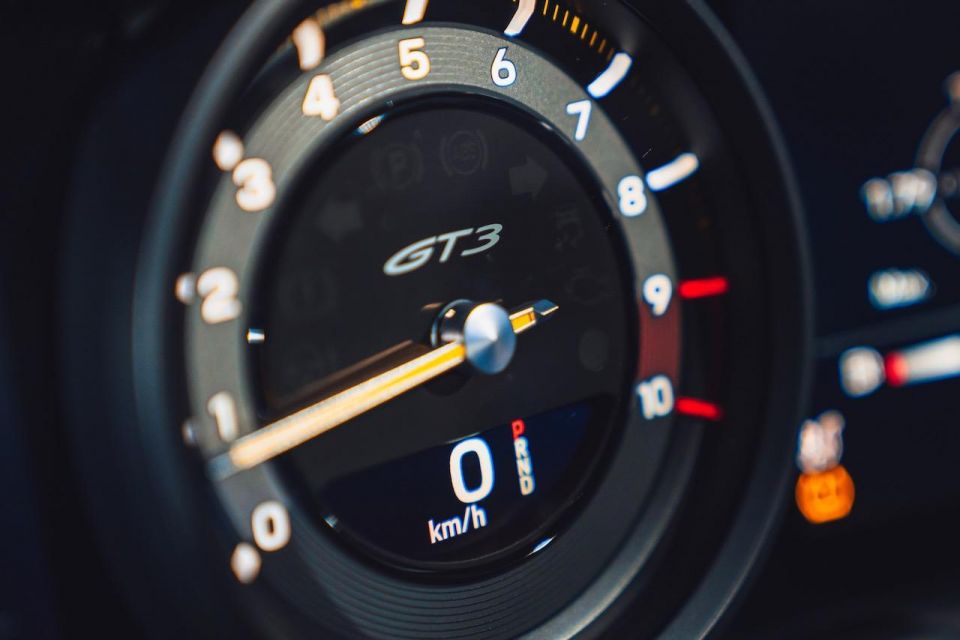

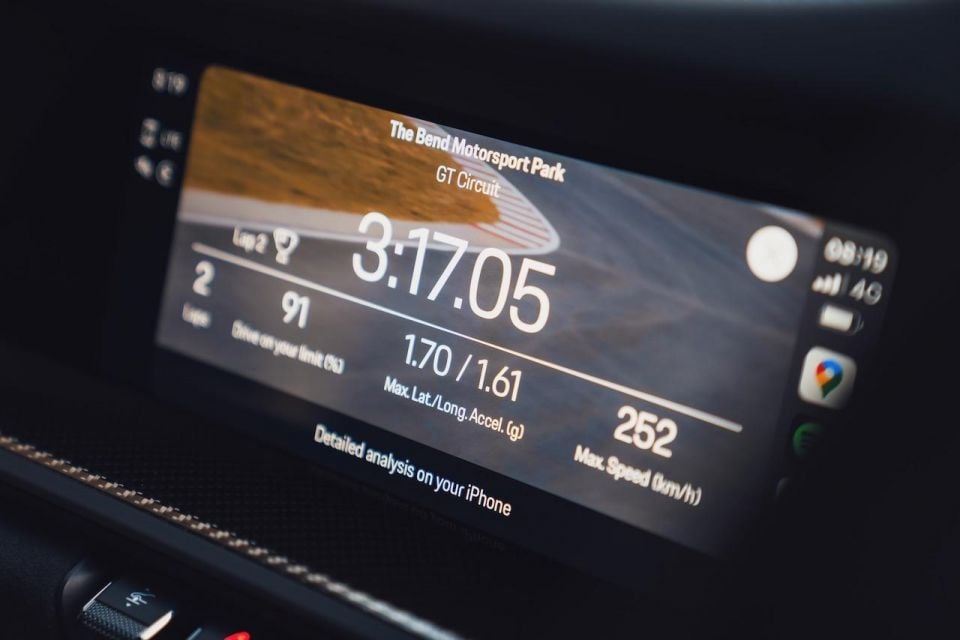
Buy your new car without the stress. It's fast, simple and completely free.

Great service from Travis and team, second time I have used this business would not hesitate to recommend them to anyone
Craig C.
Purchased a Ford Ranger in Sunshine Coast, QLD
CarExpert helped Craig save thousands on his Ford Ranger, now let us save you on your next new car.
Find a dealStandard equipment on the 2022 Porsche 911 GT3 includes:

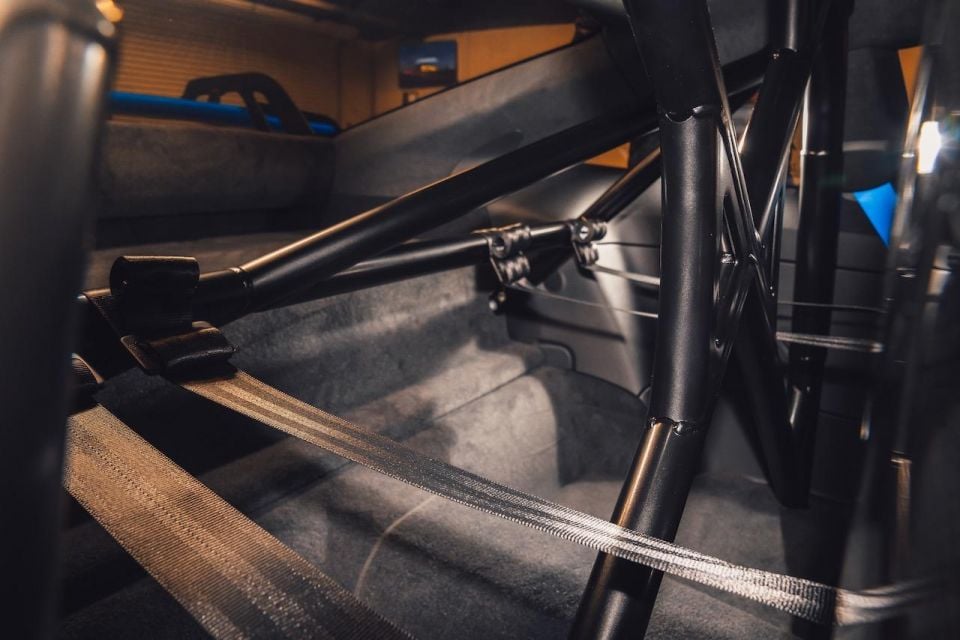
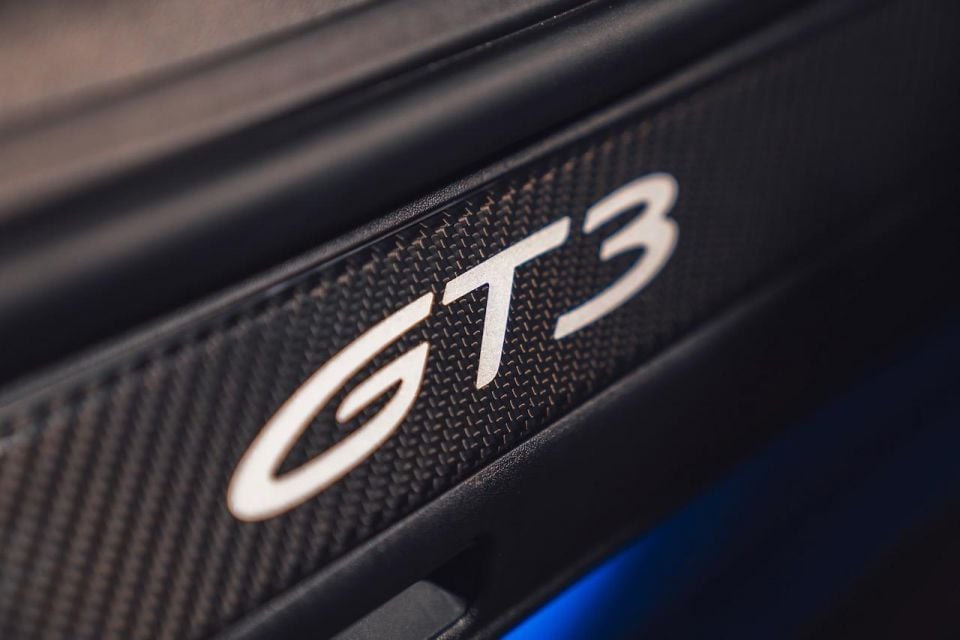

Our 911 GT3 test car was also fitted with a slew of optional extras including:
Our 911 GT3 tester came to $429,590 plus on-road costs with options.

Choosing the 911 GT3 with Touring Package makes the following changes:
Tailpipe trims in Black are a NCO, as is the Touring exterior package, which includes window trims and side skirts in Black.
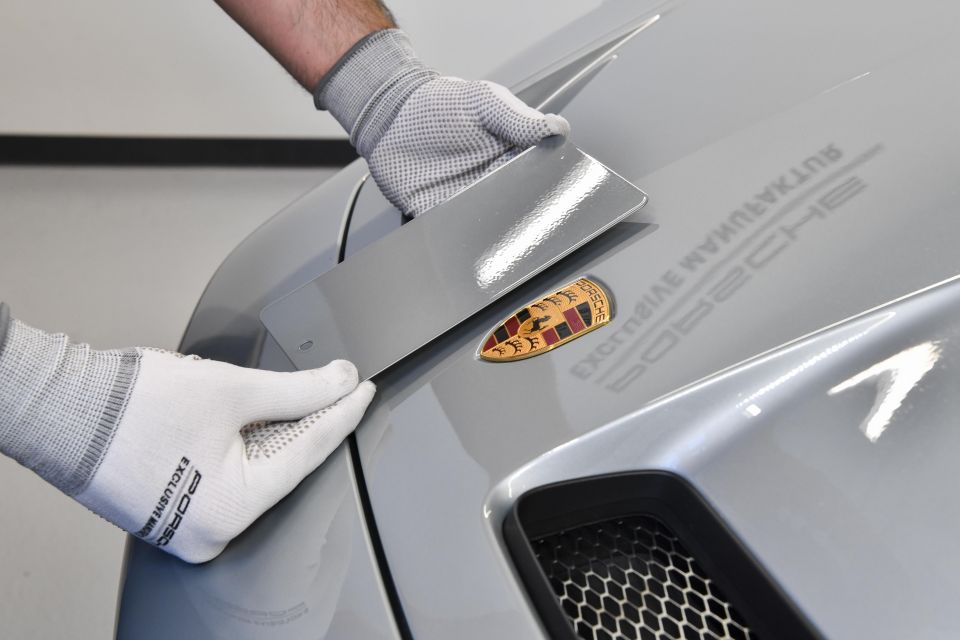
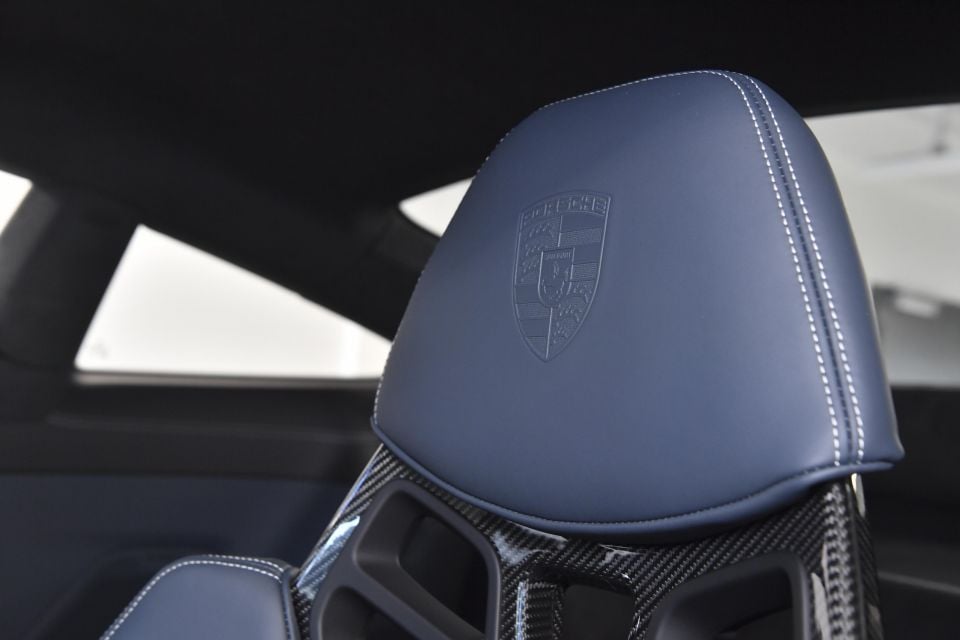
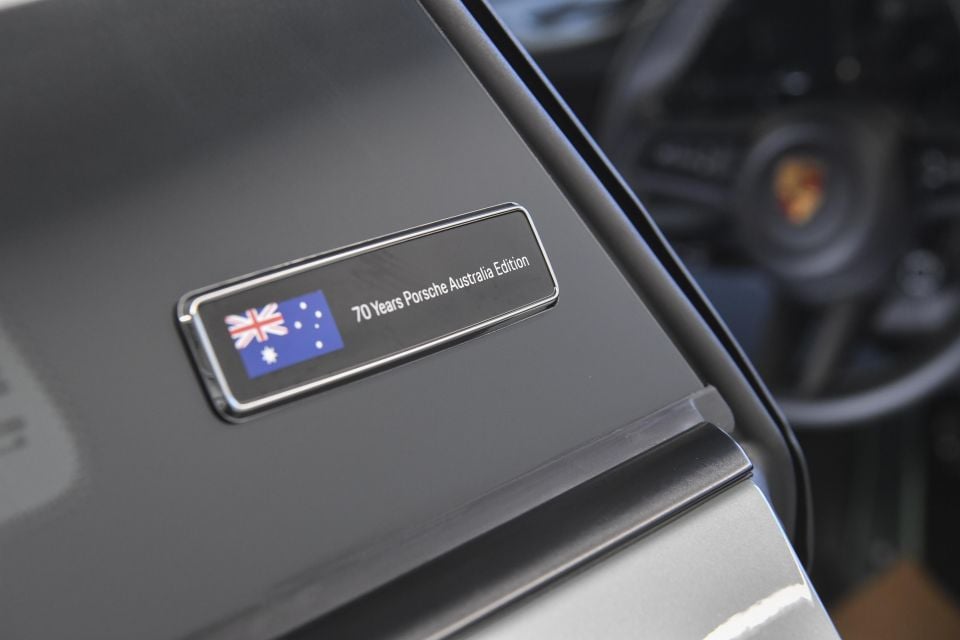
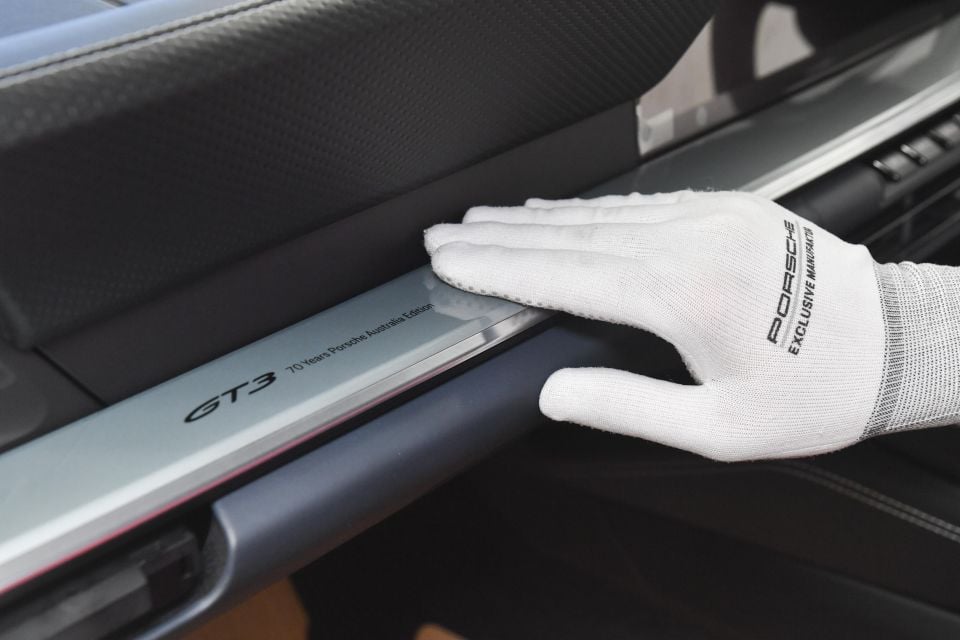
The Porsche GT3 70 years Porsche Australia Edition features the following distinguishing features:
If you’re looking for more details on all the options and inclusions, you can visit the Porsche website to get more information.
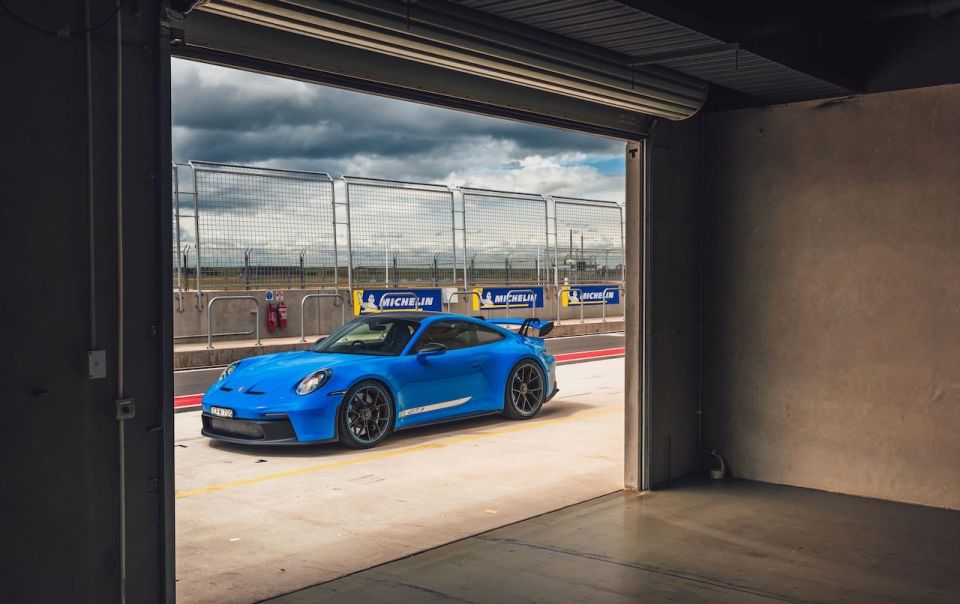
Porsche doesn’t crash test its sports cars, which includes the entire 911 model range, so there’s no ANCAP or Euro NCAP safety rating for the GT3.
Standard safety equipment includes driver and front passenger airbags, a thorax airbag built into the side bolster of each front seat, and head airbags for each front seat.
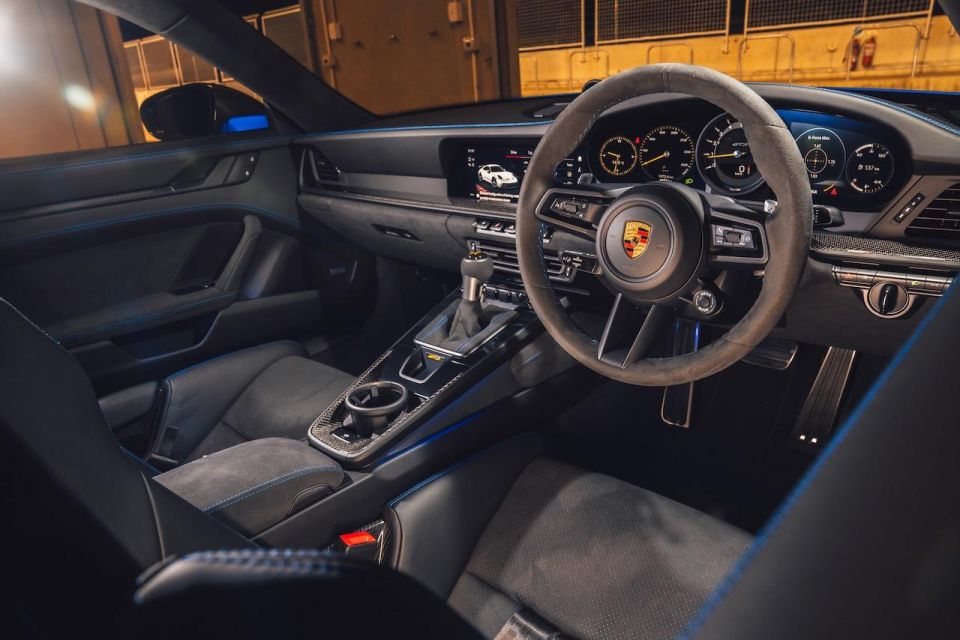
The cabin is pretty much standard 911 fare except for the fact it’s strictly a two-seater, unlike regular 911 models that get two small bench-style seats in the back. A testament to its motorsport heritage and track-focused DNA which makes the GT3 so sought after.
It’s also a place where you’re going to feel instantly at home in, regardless of whether you’re familiar with 911s or not. The driving position is practically tailor-made for enthusiasts and likely to be the closest thing to a race-car vibe for the road you’ve ever experienced.
There’s no fancy flat-bottomed steering wheel, although its perfectly round tiller incorporates a drive-mode dial for the first time in a GT3, allowing drivers to switch between Normal, Sport and Track.
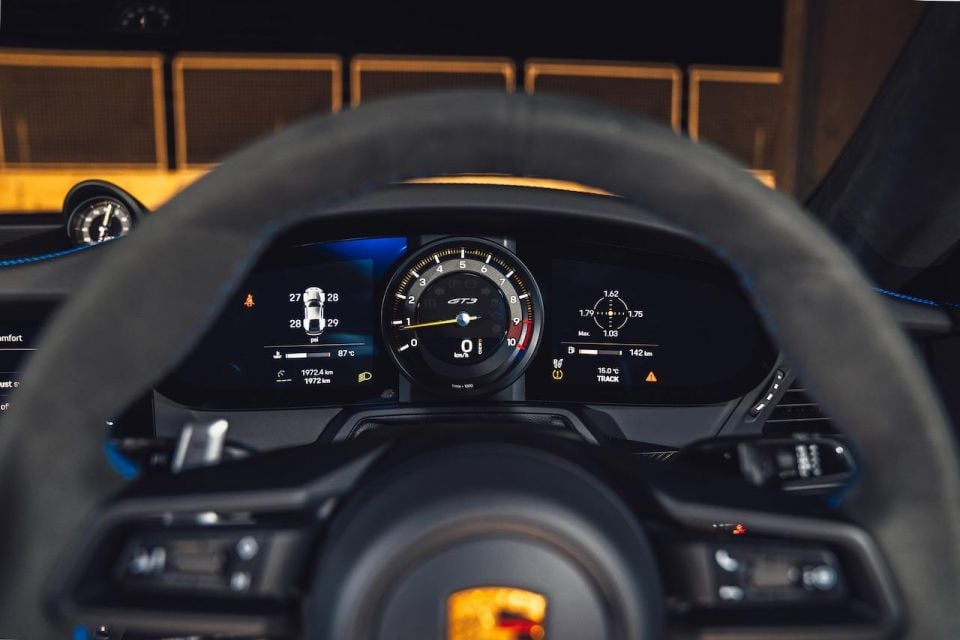
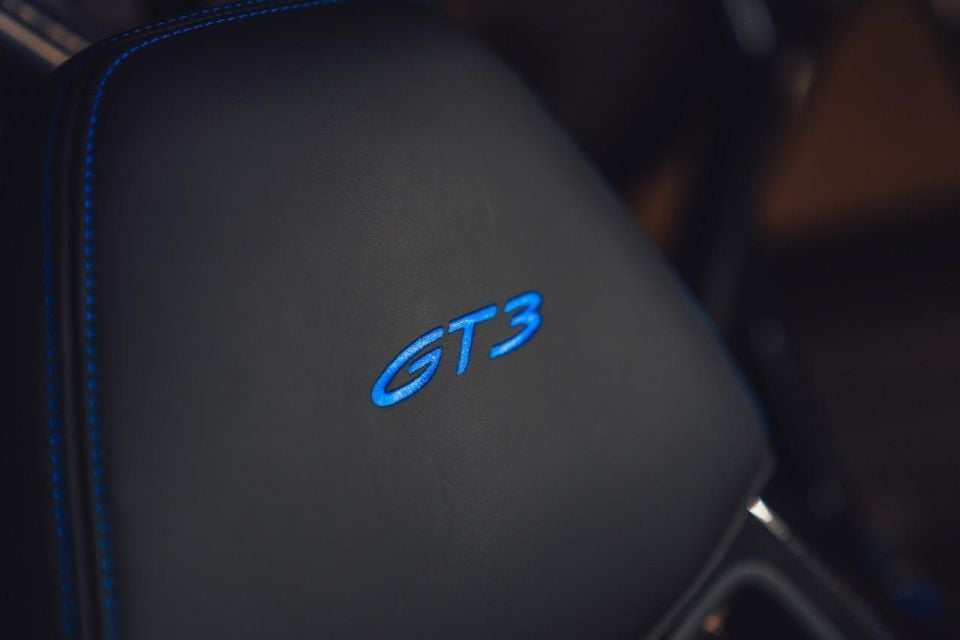
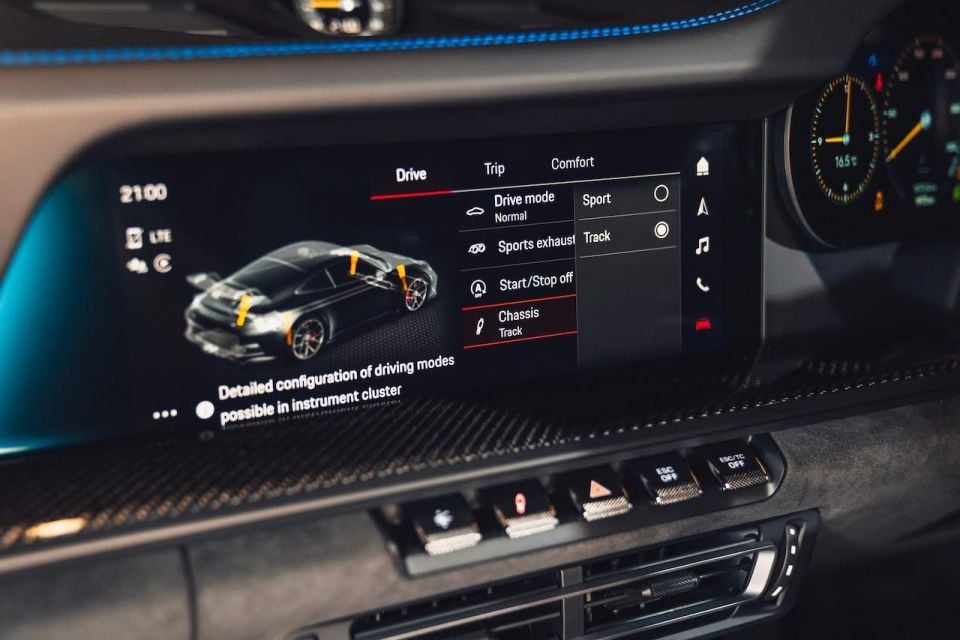
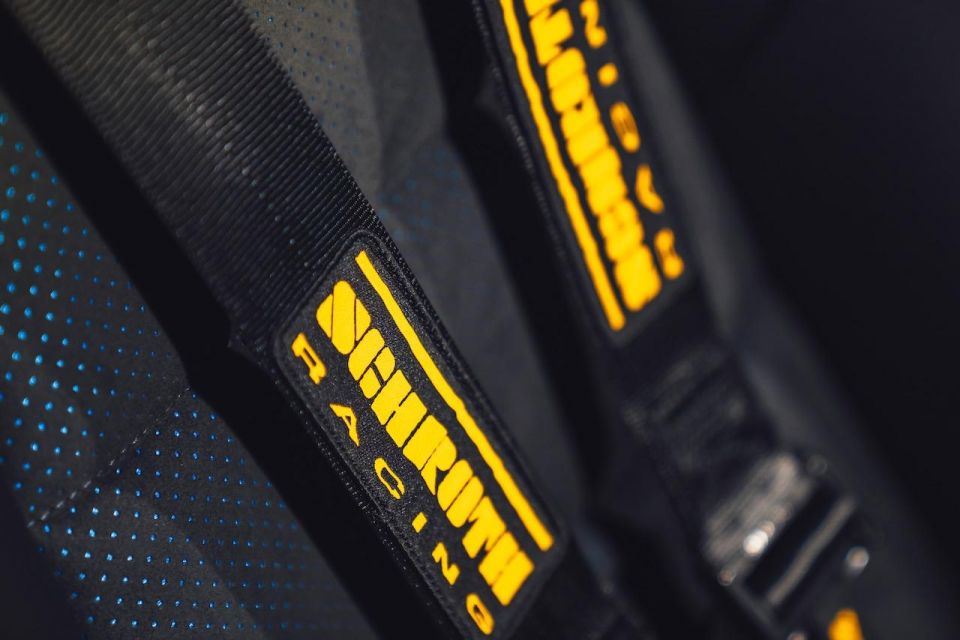
More importantly, the trademark centrally-positioned analogue rev counter runs up to an eye-popping 10,000rpm, a necessary measurement for the GT3 given its 4.0-litre flat-six revs to a screaming 9000rpm. Alongside, there’s a new track screen that minimises the display to show only relevant information such as oil temperature, oil pressure and fuel level on one side, with coolant and tyre pressure on the other – only the GT3’s system can distinguish between cold and warm tyres.
It’s certainly not lush by any means, but it does look and feel contemporary with its 10.9-inch touchscreen which measures up to anything in its class as far as interface, response and clarity are concerned.
For those opting for the PDK transmission, the shifter cleverly mimics the six-speed manual gear lever. It’s a cool design touch, certainly one that resonates better than the odd-looking stub in other 911 grades that still doesn’t look or feel right to me. But then again, I’m old school.

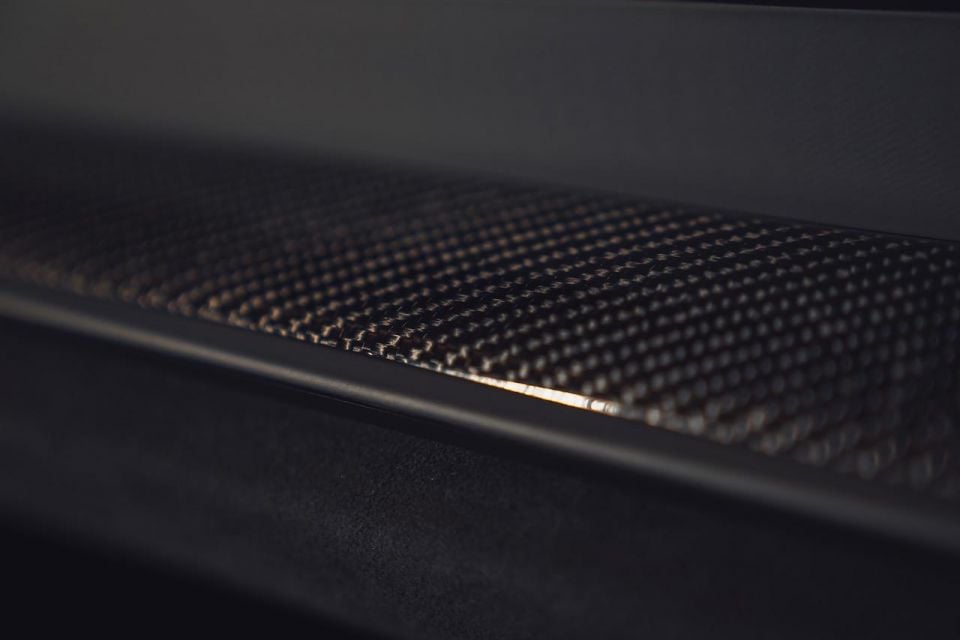

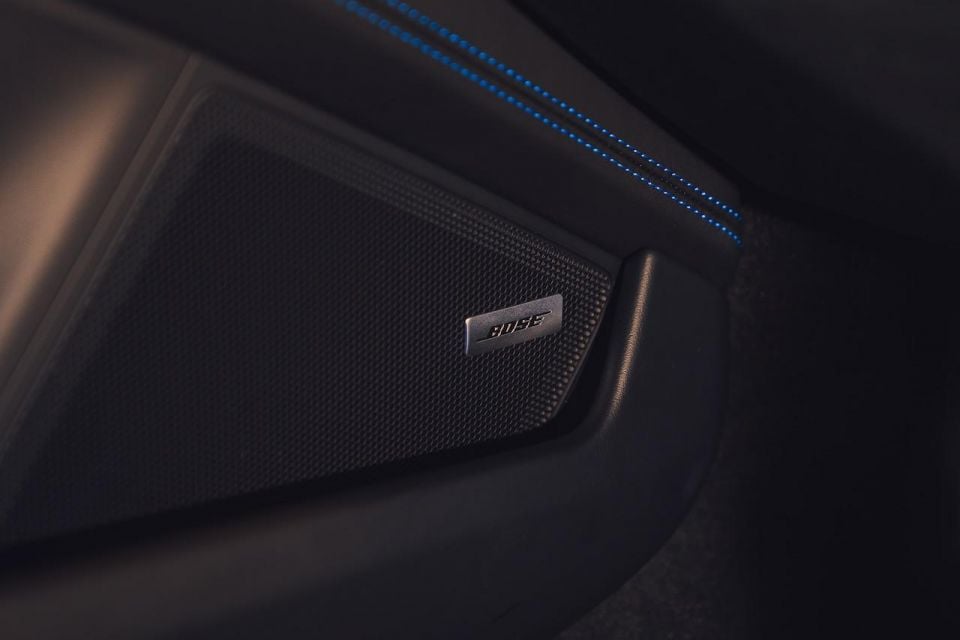
Moreover, our GT3 tester we drove at Sydney Motorsports Park was also fitted with the no-cost Clubsport package which adds a bolted-on roll bar behind the front seats. Also included is the preparation for a battery disconnect switch, a motorsport-spec hand-held fire extinguisher and a six-point harness for the driver’s seat.
While we haven’t yet experienced the standard Sports seats, the optional full-carbon bucket seats borrowed from the Porsche 918 hypercar are indeed impressive. Not just for the lashings of exposed high-gloss carbon-fibre and extra-high side bolsters, but for the exceptional comfort they afford.
At $11,250, they’re not exactly cheap, but for those that want the ultimate track-day advantage, they also save 12kg compared with the regular sports seats. Oh, and they’re manually adjustable as far as the seat rail goes, although, height adjustment is thankfully electric.
If you’re wanting a closer look at the interior, you can head over to the Porsche website and use their 360° Experience on each model.
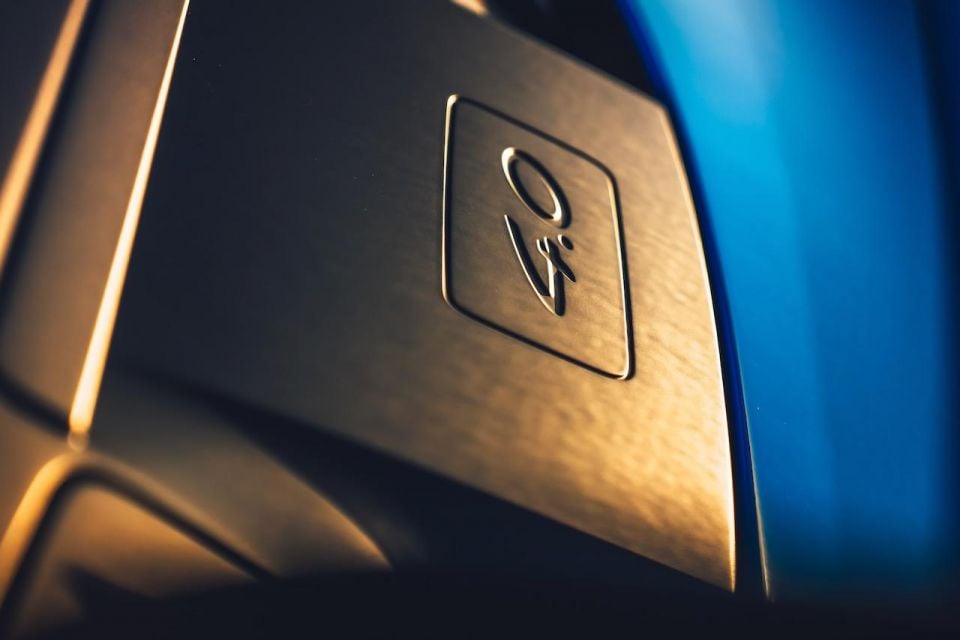
Where expert car reviews meet expert car buying – CarExpert gives you trusted advice, personalised service and real savings on your next new car.
The fact the GT3 gets the only non-turbo engine in the entire 911 line-up is something to celebrate these days, and just goes to show you the lengths that Porsche’s GT division will go to satisfy genuine enthusiasts.
Under the rear lid, which doesn’t seem to open any more, there’s a 4.0-litre naturally-aspirated flat-six that has more in common with Porsche’s racing program than any other 911. It’s basically unchanged from the engine found in the 2021 911 GT3 Cup racer, but also used in the 911 Speedster.
However, power is only up a modest 7kW to 375kW, while torque gets an equally slight 10Nm bump to 470Nm at 8400rpm. It’s enough to send the GT3 from standstill to 100km/h in 3.4 seconds and 0-200km/h in 10.8 seconds. Top speed is quoted as 318km/h.
For those GT3 owners concerned with fuel economy (there can’t be many), it’s a Euro 6-compliant engine that claims to use 12.4L/100km on the combined cycle (NEDC), with CO2 emissions measured at 283g/km on the same cycle.
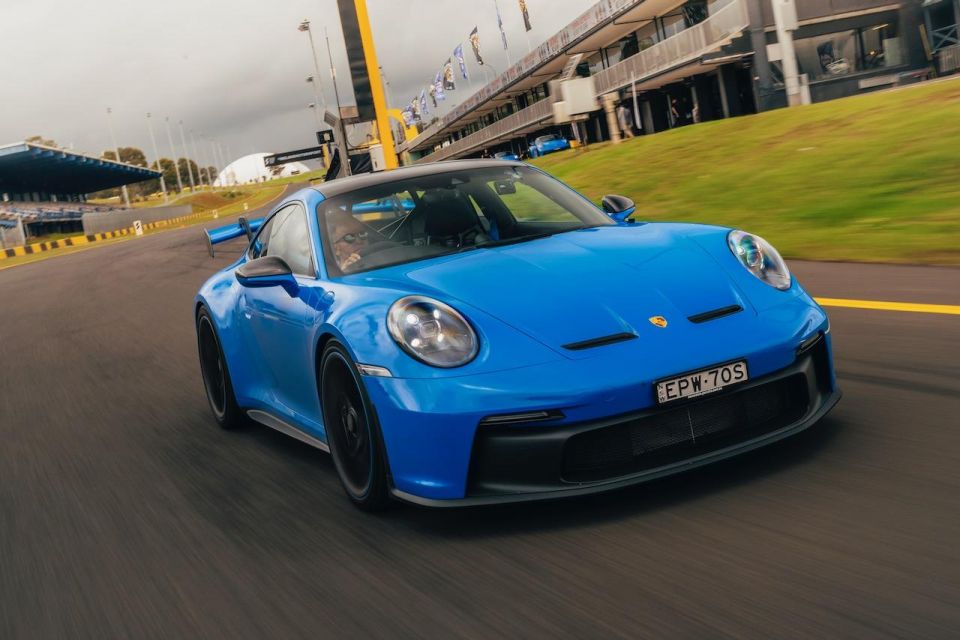
Just sitting idle in pit lane in the GT3 is something to relish. And, despite the fact I’m cocooned in the deeply recessed carbon race buckets with six-point harness, there’s absolutely no need for anything more than the Shark Blue lap-sash belt – that’s what Bathurst winner Luke Youlden is telling me, so I’m all good with that.
The flat-six fires with a twist of the key-stub (the only thing I don’t like about this car), with its trademark flat-six bark only a 911 GT3 can make. If anything, it’s note isn’t quite as metallic as the previous generation, but it’s deeper and more muscular, at least to me.
It takes a few minutes to get set with the hybrid electric/manual seat adjustment but it’s as close to perfect as you can get in a series-production road car. It amazes me just how well cushioned and comfortable these hardcore buckets are, as I was expecting a more spartan approach to seat-bottom relief in the GT3.
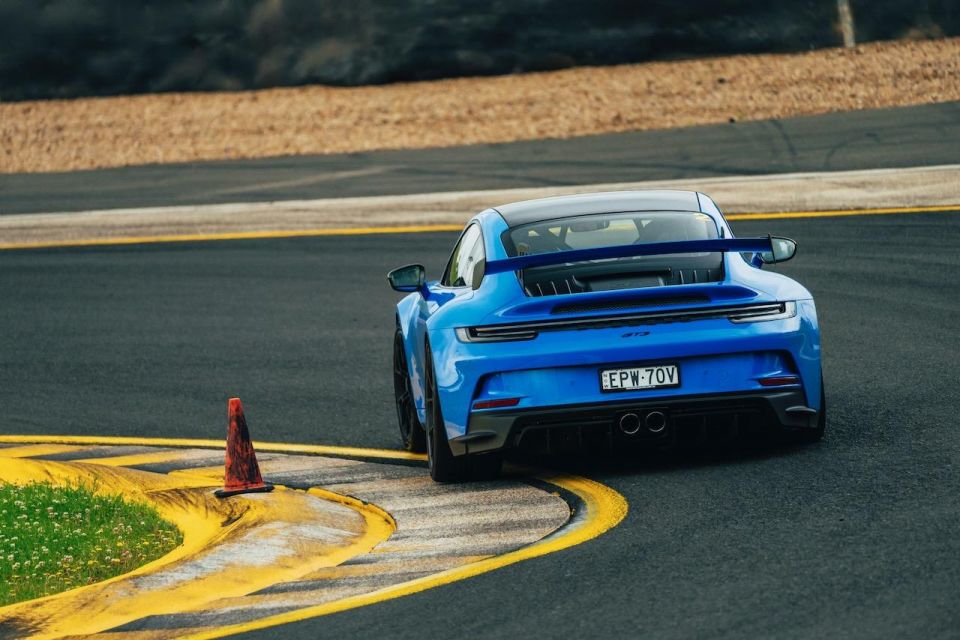
It’s a track test only today, and as much as I like driving a Porsche 911 with paddleshifters on a race track like Sydney Motorsport Park, I’m in Track PDK for 100 per cent auto shifting. Yep, it’s that good.
Hurtling down the straightaway, it’s comforting to know you’ve got the very latest Michelin Pilot Sport Cup 2 Tyres to help put the power down – 255/35 front and extra-wide 315/30s down back with a staggered wheel setup. Not only are all four tyres 10mm wider than before, but the compound has way more grip than the previous 991.1 GT3 I drove.
Never mind that I hadn’t driven here for more than two years, or that the run-offs aren’t always that generous, the GT3’s sharper front-end characteristics and new-found downforce inspires crazy levels of confidence through the bends. You end up putting down a decent lap time straight off the bat, but immediately realise you’re going too slow in a few key turns.

Part of that is the GT3’s intensely redeveloped double-wishbone front axle, plucked from the Le Mans-winning 911 RSR for the very first time. The technical explanation is worth knowing here given the results. Effectively the setup brings higher camber stiffness and eradicates unsettling lateral forces on the shock absorbers for some of the sharpest and linear turn-ins of any car.
So good it is, you end up pushing harder from corner entry right through to the exit and beyond all too easily. This car will make you faster on track straight out of the box, especially those with a modicum of talent.
The grip levels are off the charts. Just when you think you’re pushing, Luke Youlden gets in and takes it up another five notches, and it’s like, ‘okay so that’s how hard I can push these Cup 2 tyres’. I can tell you with absolute clarity the 991 GT3 had nowhere near this much mid-corner grip. It really is staggering.
There are those that will compare the 911 GT3 to the hardcore McLarens, and while I can’t vouch for the 765LT, I have driven the 675LT on track at Silverstone. I can tell you, the new GT3 feels more linear in the controls – easier and more friendly at the limit, even if it doesn’t have the straight-line pace.
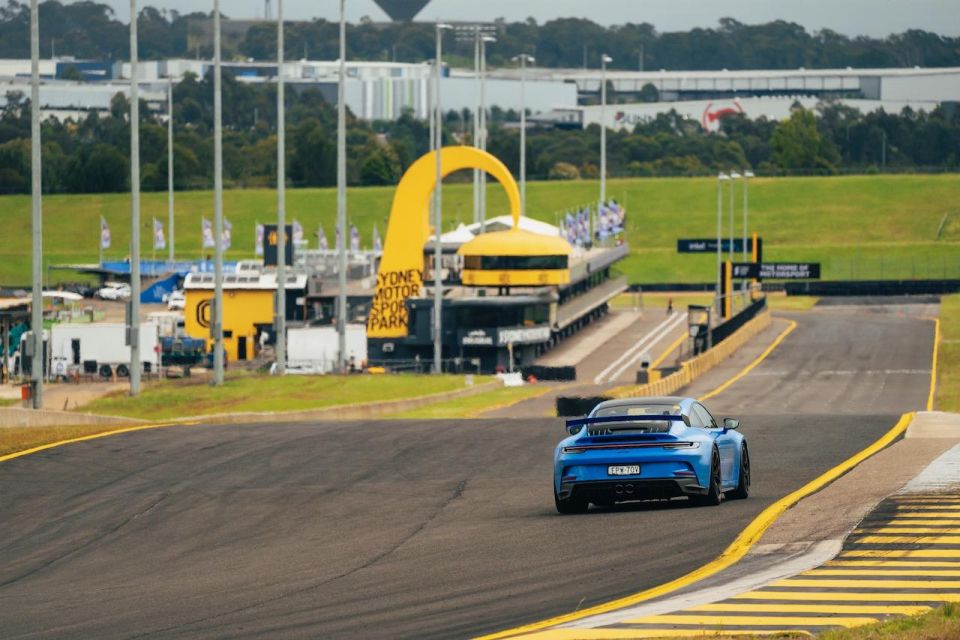
The GT3’s chassis limits are extreme and it’s doubtful mere mortals will have the courage to dive that deep into the bowels of this chassis. It doesn’t seem to matter how many laps you lay down, you still come away thinking you left several seconds on the track and somehow haven’t done the car justice – despite what you may have thought was some heroic late braking.
I doubt you’ll need to go as far as the optional carbon-ceramic brakes as far as stopping power goes, because the standard 408mm front rotors (up from 380mm) are stupendous in this regard, not only for their larger diameter and higher strength, but also the special air paths for better cooling.
I’m also sure the GT3’s rear-axle steering is helping with that corner speed thanks to better (and easier) car rotation. There’s less arm-twirling action in the hairpins that I previously recall, so you don’t get as tired.

Porsche offers a three-year, unlimited-kilometre warranty across the board, as well as three-year paint warranty and 12-year rust coverage.
Service intervals are 20,000km or 12 months, whichever comes first, while service costs vary by dealer.
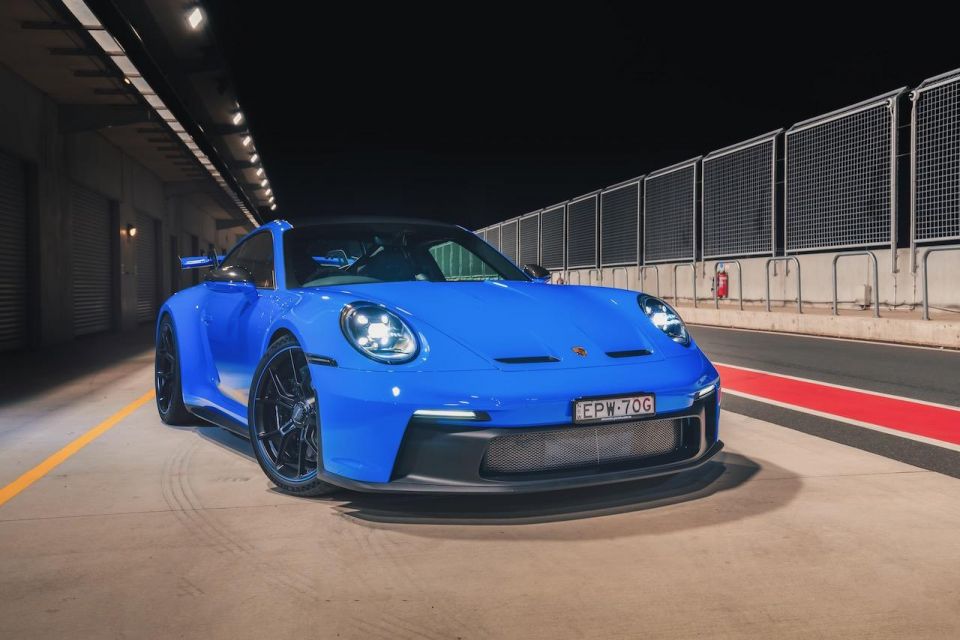
In 2016, I hopped out of a brand-spanking new 911 GT3 RS in Lava Orange and was enthusiastically touting it as by far and away the best driver’s car on the planet. Certainly, it was the most thrilling Porsche 911 road car to date, with respect to the McLaren 675LT and Lamborghini Huracan Evo I drove at Bahrain.
That sentiment no longer stands true.
I can tell you, categorically, the ‘992’ 911 GT3 is the most complete naturally-aspirated Porsche GT road car I’ve ever driven, and I can’t even begin to imagine a better one. But we all know the next one will indeed be better.
That’s just how it is with Porsche.
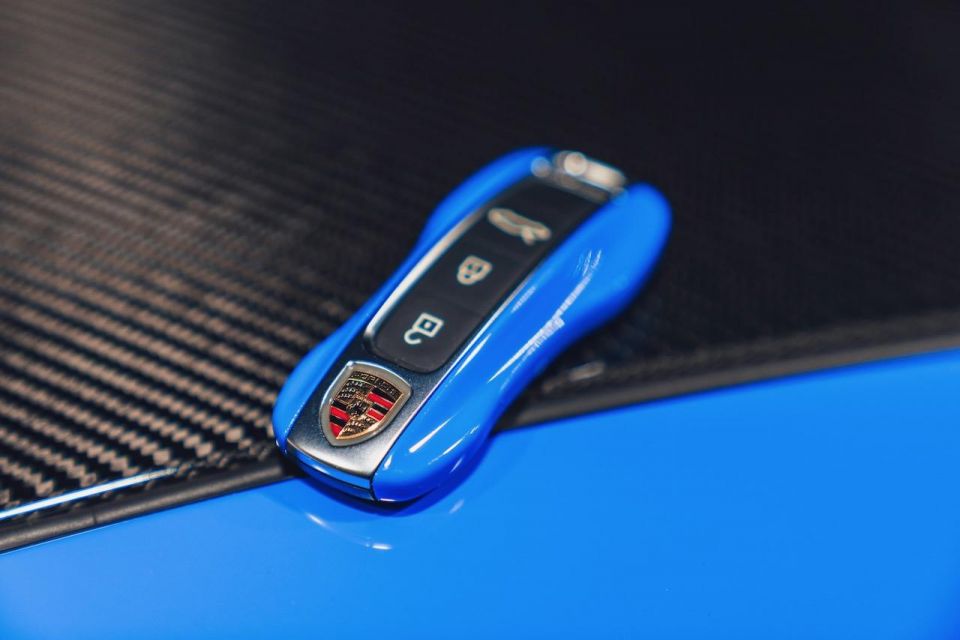
Click the images for the new gallery
MORE: Everything Porsche 911
Where expert car reviews meet expert car buying – CarExpert gives you trusted advice, personalised service and real savings on your next new car.
Anthony Crawford is a CarExpert co-founder and senior presenter with 20+years in automotive journalism and content creation.


CarExpert.com.au
2 Days Ago


Derek Fung
6 Days Ago
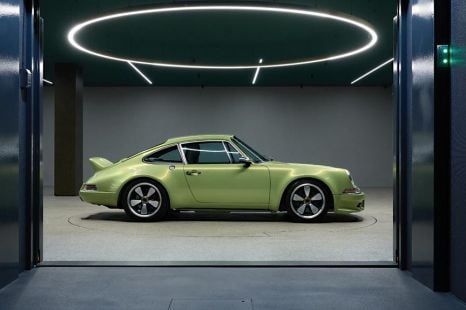

Marton Pettendy
22 Days Ago
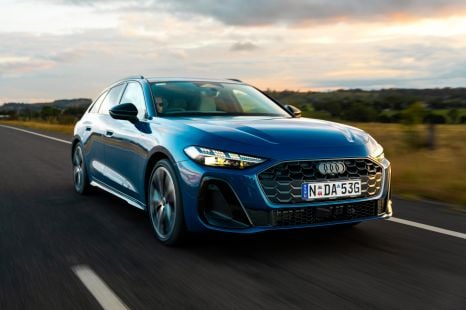

James Wong
30 Days Ago
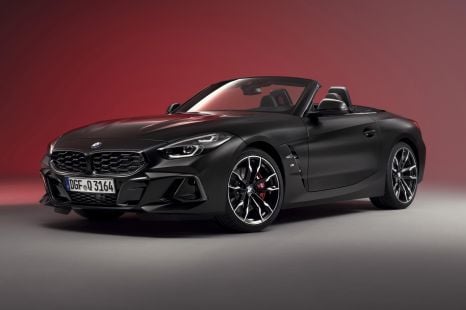

Damion Smy
1 Month Ago
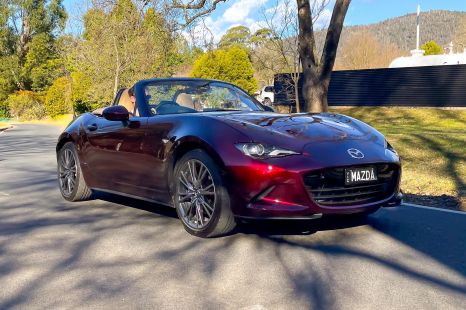

Josh Nevett
1 Month Ago